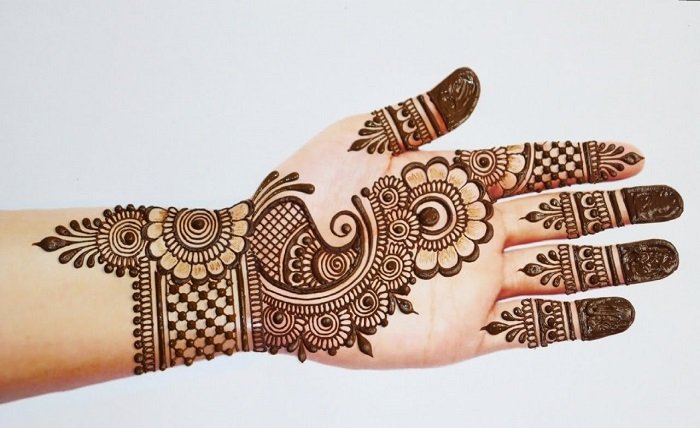The Art of Mehandi Designs: A Timeless Tradition of Beauty and Culture

Mehandi designs have been an integral part of cultural celebrations and personal adornment for centuries. Originating from ancient traditions, mehandi, or henna, is more than just a temporary tattoo; it is a symbol of joy, beauty, and spirituality. Whether it’s a wedding, festival, or casual gathering, mehandi designs add a touch of elegance and tradition to any occasion. In this blog post, we’ll dive deep into the world of mehandi designs, exploring their history, styles, application techniques, and more.
The History and Significance of Mehandi Designs
Mehandi designs have a rich history that spans across cultures and continents. Originating in ancient Egypt and India, henna was used not only for its cooling properties but also as a form of body art. Over time, mehandi designs became synonymous with celebrations, particularly weddings, where intricate patterns symbolize love, prosperity, and good fortune. In many cultures, applying mehandi is considered auspicious, and the darker the stain, the stronger the bond between the couple. Today, mehandi designs continue to hold cultural significance while evolving to include modern trends.
Types of Mehandi Designs
Mehandi designs come in a variety of styles, each with its own unique charm. Here are some popular types:
- Traditional Indian Mehandi Designs: Known for their intricate patterns, these designs often feature peacocks, flowers, and paisleys. They are commonly used in weddings and festivals.
- Arabic Mehandi Designs: Characterized by bold, flowing patterns, Arabic mehandi designs focus on large floral motifs and leaves.
- Indo-Arabic Mehandi Designs: A fusion of Indian and Arabic styles, these designs combine intricate details with bold elements.
- Western Mehandi Designs: These designs are minimalist and often include geometric shapes, dots, and lines.
- Bridal Mehandi Designs: The most elaborate of all, bridal mehandi designs cover the hands and feet with dense patterns, often incorporating hidden elements like the groom’s name.
How to Apply Mehandi Designs
Applying mehandi designs is an art that requires precision and patience. Here’s a step-by-step guide:
- Prepare the Henna Paste: Use high-quality henna powder mixed with water, lemon juice, and essential oils like eucalyptus to create a smooth paste.
- Choose Your Design: Select a mehandi design that suits the occasion. Beginners can start with simple patterns, while experts can experiment with intricate designs.
- Transfer the Design: Use a cone or applicator bottle to draw the design on your skin. Start from the center and work your way outwards.
- Let It Dry: Allow the mehandi paste to dry for 2-3 hours. Avoid smudging the design during this time.
- Remove the Paste: Once dry, gently scrape off the paste. Avoid using water for at least 12 hours to let the stain deepen.
Tips for Long-Lasting Mehandi Designs
To ensure your mehandi designs last longer, follow these tips:
- Apply mehandi on clean, exfoliated skin for better absorption.
- Keep the area warm after application to enhance the stain.
- Avoid washing the design with water for at least 12 hours.
- Apply a mixture of sugar and lemon juice to the dried paste to lock in the color.
- Moisturize the area regularly to prevent the design from fading quickly.
Modern Trends in Mehandi Designs
Mehandi designs have evolved over time, blending traditional elements with contemporary styles. Some modern trends include:
- Glitter Mehandi: Adding glitter to mehandi designs for a festive look.
- White Henna: Using white henna for a unique and elegant appearance.
- Tattoo Mehandi: Combining mehandi with temporary tattoos for a bold statement.
- Minimalist Mehandi: Simple, understated designs for everyday wear.
- Colored Mehandi: Experimenting with colored henna for a vibrant twist.
Mehandi Designs for Different Occasions
Mehandi designs are versatile and can be tailored to suit various occasions:
- Weddings: Elaborate bridal mehandi designs that cover the hands and feet.
- Festivals: Traditional patterns for celebrations like Diwali, Eid, or Karva Chauth.
- Engagements: Delicate designs for pre-wedding ceremonies.
- Casual Gatherings: Simple, elegant patterns for everyday events.
- Baby Showers: Fun and playful designs for expecting mothers.
The Cultural Impact of Mehandi Designs
Mehandi designs are more than just body art; they are a reflection of cultural heritage and identity. In many societies, mehandi is a way to express creativity, celebrate milestones, and connect with tradition. From Indian weddings to Moroccan festivals, mehandi designs bring people together, transcending borders and generations. As the world becomes more interconnected, mehandi continues to inspire artists and enthusiasts worldwide.
Conclusion
Mehandi designs are a beautiful blend of art, culture, and tradition. Whether you’re a bride preparing for your big day or someone looking to add a touch of elegance to a casual event, mehandi offers endless possibilities. With its rich history, diverse styles, and modern adaptations, mehandi designs remain a timeless form of self-expression. So, the next time you adorn your hands with henna, remember that you’re not just wearing a design—you’re carrying forward a legacy.
Discover the thrilling world of “Secret Class ToonGod“—a must-read webtoon packed with drama, romance, and unexpected twists! Follow the gripping story of a young protagonist navigating hidden truths and forbidden lessons in this addictive series. With stunning artwork and a captivating plot, Secret Class ToonGod keeps fans hooked with every chapter. Whether you’re a webtoon enthusiast or new to the genre, this series promises excitement and suspense. Dive into the Secret Class ToonGod universe today and join the fandom!
FAQs
1. How long do mehandi designs last?
Mehandi designs typically last 1-2 weeks, depending on the quality of the henna and aftercare.
2. Can I apply mehandi on any part of the body?
Yes, mehandi can be applied on hands, feet, arms, and even the back, depending on the design.
3. Is mehandi safe for all skin types?
Natural henna is generally safe, but always do a patch test to avoid allergic reactions. Avoid black henna, which contains harmful chemicals.
4. How can I make my mehandi stain darker?
Keep the area warm, avoid water for 12 hours, and apply a sugar-lemon mixture to deepen the stain.
5. Can I create mehandi designs at home?
Yes, with practice and the right tools, you can create beautiful mehandi designs at home. Start with simple patterns and gradually move to intricate ones.





